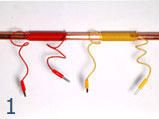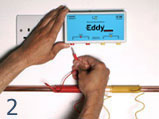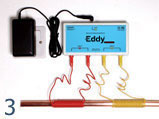
 |
 |
||
 |
 |
 |
|
Introduction to Hard WaterWater is commonly
classified as hard or soft depending on the type and amount of
naturally occurring minerals and salts dissolved in it. The mineral
content usually comprises the metal ions of calcium and magnesium
(yes these are both metals!) in the form of their carbonates,
calcium carbonate and magnesium carbonate but may include several
other metals as well as sulphates and bicarbonates. When water
has a relatively high content of dissolved minerals (solids) it
is described as hard, whereas soft water has a low dissolved content. It is impossible to remove the permanent hardness of water by boiling. It occurs because of the concentration of calcium and magnesium sulphates and/or chlorides in the water. These become more soluble when there is a rise in temperature Degree of Measure. The hardness of water is measured as milligrams per litre of calcium carbonate, e.g. 200mg/litre CaCO 3. Milligrams per litre is the same as parts per million (ppm). You may also see hardness expressed as mg/litre of calcium. These can be converted into mg/litre of CaCO3 by multiplying the reading by 2.5. |
Remove
the problem of hard water and limescale.
Fit an Eddy electronic water descaler
Risk free.
12 month money-back guarantee.
Lifetime guarantee against unit failure !
